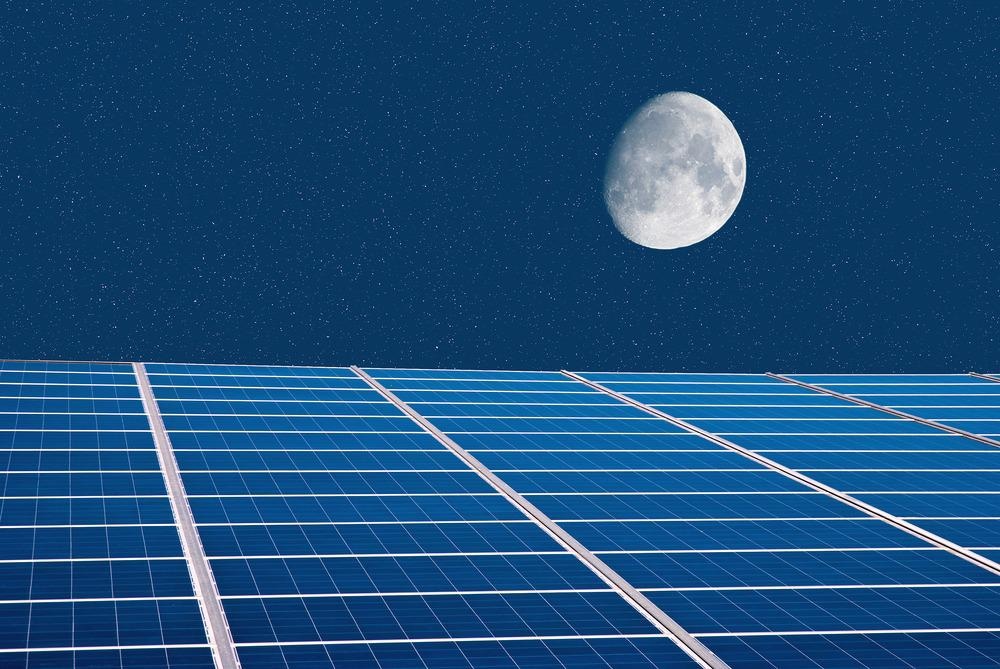
Image Credit: lafoto/Shutterstock.com
Dust on solar panels’ protective glass surface can quickly reduce their efficiency, meaning less of the Sun’s energy is converted into usable electricity. In addition, solar panels are often in remote or hard-to-reach spots, making them difficult to clean regularly.
A way of automatically removing surface contamination from the panels without human intervention is needed. The method should be water-saving since solar power farms are often constructed in semiarid or desert locations, or places without access to a readily available water supply, for example, along railway lines.
Taking Inspiration from Nature
Many scientists have been inspired by nature and taken a biomimetic approach to cleaning the surfaces. Their solutions replicate the surface coatings of lotus or rice leaves, or butterfly wings, for example. But their methods are passive – they rely on gravity to pull water downwards to remove contamination.
However, scientists from the University of Washington have taken a different approach by exploring active self-cleaning surfaces. They claim their newly-developed system can use a single droplet of water to clean a contaminated surface systematically.
ARC Patterned Coatings
The surfaces under investigation were patterned with ARC or anisotropic rachet conveyors. These are hydrophilic curved rungs on hydrophobic backgrounds. The Washington team designed and fabricated two ARC systems, but many other material combinations could also be used.
The first was a sperfluoro-octyltrichlorosilane (FOTS)-trimethylsilanol (TMS) self-assembled monolayer (SAM). After the FOTS-TMS treatment, the glass remained transparent and flat.
The second system was a Cytop-TMS spin-coated thin-film. Cytop is an amorphous fluoropolymer with good transparency across the ultraviolet and visible range, and serves as an anti-reflective coating on the glass. It also improves the optical transmittance by 2.5-3.5% across the entire visible wavelength.
“The Cytop-TMS coating generated higher optical output power than bare glass and FOTS-TMS surface treatment, in accordance with the light transmission measurements,” the researchers said. “The optical performance demonstrated that our coating systems were compatible with solar module cover glass and can even have anti-reflective properties to improve solar module power output efficiency.”
Proof-of-Concept and Controllability
When a water droplet was applied to the ARC patterned surface using a pipette, it was transported along the predefined zig-zag ARC track, covering the entire surface under mechanical orthogonal vibration. The Washington researchers claim that the system uses just 10 μL droplets of water to remove dirt from the contaminated surface.
The adhesion of dust to the panel is influenced by the particle’s characteristics and what they are made of, often quartz and silicate minerals, and agricultural and fuel components. Environmental conditions – relative humidity and temperature, for example – surface roughness, and any treatments the surface has undergone also affect how well dust sticks to the surface.
This study showed that the detachment forces – tension force of the modular surface and the water’s hydrodynamic shear force - were more robust than the adhesion forces and the surface contamination was removed.
“Dust particles were dislodged by the surface tension force and the hydrodynamic force, while encapsulated by the internal flow of the vibrating droplet,” the researchers explained.
The droplet appeared to defy gravity and climb up the device’s inclined surface because of the vibration. “Our experiment showed that the droplet can climb uphill at up to a 15-degree inclination of the surface,” they added. “With higher inclination angles, the droplet tended to be shaken off the surface.”
Real-time demonstrations showed the solar modules achieved a 23%-point gain after cleaning. Furthermore, this active system is more controlled than a passive system. The process is single-mask to reduce the manufacturing expense, although the additional costs it will add to the process are undisclosed.
References and Further Reading
Bellini, E. (2021) Active self-cleaning tech for PV modules, pv magazine [online] https://www.pv-magazine.com/2021/02/02/active-self-cleaning-tech-for-pv-modules/ (Accessed 12 February 2021).
Sun, D. and Böhringer, K. (2020) An active self-cleaning surface system for photovoltaic modules using anisotropic ratchet conveyors and mechanical vibration, Microsystems & Nanoengineering https://doi.org/10.1038/s41378-020-00197-z (Accessed 12 February 2021).
Disclaimer: The views expressed here are those of the author expressed in their private capacity and do not necessarily represent the views of AZoM.com Limited T/A AZoNetwork the owner and operator of this website. This disclaimer forms part of the Terms and conditions of use of this website.